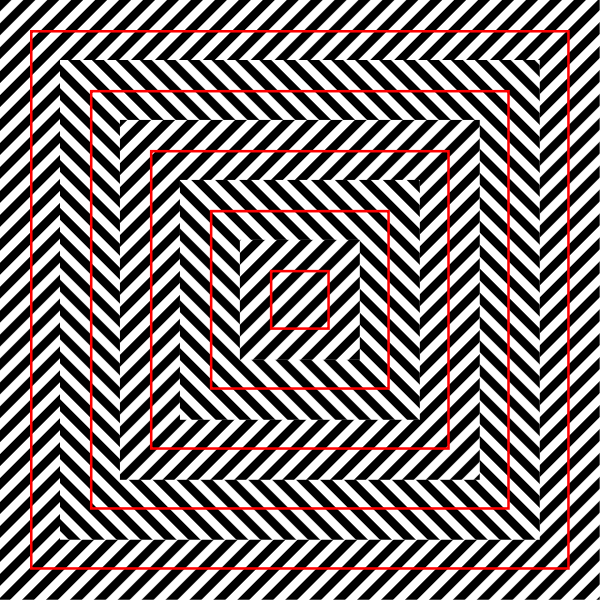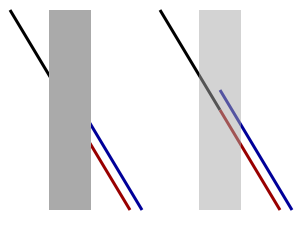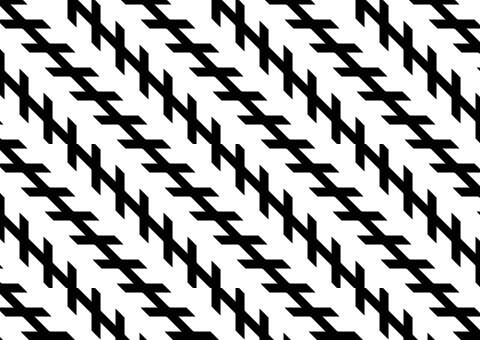Look at the red figures. Are they parallelograms or squares? Are some squares and some parallelograms?

All three of the red shapes are in fact perfect squares. The confounding background makes them appear to be parallelograms. To test this: if you walk away from your computer screen about 8-10 feet, the black and white pattern will start to blend together and look gray and the red squares will be easy to perceive.
It’s thought that the explanation for this illusion’s effect draws on a combination of 2 different but related illusions and their effects: the Poggendorff illusion and the Zöllner illusion. Both illusions illustrate our brain’s inability to accurately assess the trajectories and angles of diagonal lines as they relate to straight lines. The effects combine in the drawing above to confuse the brain.
Poggendorff’s illusion is pictured below.

If you look at the figure on the left, it appears that the black line is a continuation of the blue line. Unmasking the gray bar, as in the figure on the right, shows that the black line is actually a continuation of the red line and not the blue line. Now, let’s look at Zöllner’s illusion.

In this illusion, we perceive the long diagonal lines to be crooked when in fact they are parallel. The short lines that criss-cross the diagonal lines lead our brains to perceive the lines as distorted.
